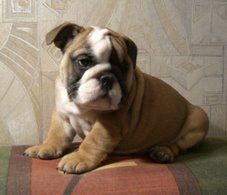Now that spring is in full swing, I realized I need to get Ruki back onto flea and tick repellant--especially as I've been taking her to Fresh Pond, where there's a patch of wooded area that she loves romping around in.
I always hated Frontline--it just seems so toxic, albeit much less toxic than
permethrin-based alternatives. (The latter, according to the blogosphere, nearly guarantees seizures and immediate death to any animal that takes it.) Plus, I went to Target today, and it was $43 for 3 applications. (At the pet store, I remember it being $15 / application, so just a few dollars more.)
Right next to it, I saw Sergeant's Nature's Guardian: $8.99 for 3 applications. I approached it warily due to my previous permethrin research and the takehome that, yes, Frontline's bad, but it works, and it's the safest thing out there.
But I checked out the ingredients. Active ingredients: peppermint oil, cinnamon oil, lemon grass oil, clove oil, thyme oil. Other ingredients: vanillin, isopropyl myristate.
So, essentially, the active ingredients are oils with natural sources. (I hesitate that they are actually "natural," though.) I also know that in close-to-pure forms, these oils can be very toxic. But here all the oils are in concentrations of 5% or less.
But, reading between the lines, all the bad stuff happens to *cats* and not dogs. And one of the comments mentioned a vet saying that cats are more susceptible to this stuff than dogs. (Though that doesn't bode well for Sergeant's quality control and testing.) And since Ruki's 40 lbs. but has a small surface area, I figured I could use about half of the 40 lb. dosage of 0.15 fl. oz.
Nervously, I took the plunge. It's been almost four hours, and it's like nothing happened. Now I have a fresh-smelling puppy, hanging out like a scented candle, doing what she normally does.
So far, success.
Now, I don't know how effective this stuff is. I know most insect repellant operates by overpowering animal scent, which this stuff is bound to do, but does it kill fleas and ticks? Frontline repels them and kills them when they get on your pet. I'm not convinced that this natural stuff will do that. But we'll see.
We also don't spend *that* much time outside. Walks in the morning and early evening in a green city, with a couple of trips to parks and dog parks. I'll keep posting if anything comes up. But, again, so far success.
